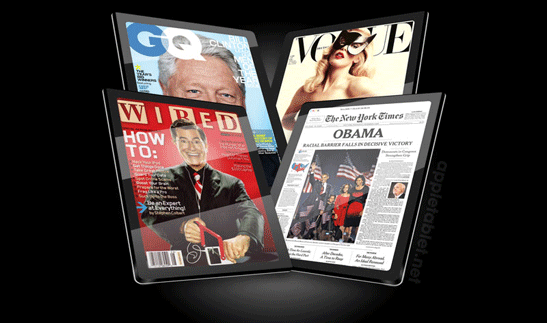
Things move so fast in the world of technology that we can sometimes lose sight of just how new some of it still is. And sometimes that very newness can cause problems.
As I was sitting in a Cole Valley café recently, watching Craig Newmark of Craigslist demonstrate how he uses his iPad (on a tiny easel) to handle customer support issues, it struck me that only a year ago this scene never could have happened.
After all, Cupertino-based Apple only introduced the iPad, probably the most super-hyped tech product of all time, in late January 2009. They sold like hotcakes, and media companies, especially magazines, raced to create iPad apps on the assumption that they represented the future reading platform of choice.
But that future may not be here quite yet. The latest figures indicate that magazine apps are not proving to be very popular with consumers over time.
San Francisco-based Wired magazine, for example, launched its iPad app to great fanfare last June, and reported 100,000 downloads in its first month.
According to the Audit Bureau of Circulations, that figure had plummeted more than 75 percent to only 23,000 for Wired’s November issue, and other magazines that reported figures suffered similar declines.
So what’s the problem?
Paris-based media consultant Frédéric Filloux noted several reasons earlier this week. One is the same thing that doomed early magazine websites – shovelware. When a magazine that has been designed for a glossy format is ported over to the much smaller tablet platform, it loses much of its aesthetic appeal.
Another issue is the cost. Most magazines charge the same amount for a monthly download as they do for an old-fashioned copy at the newsstand.
Additionally, the iPad versions of magazines are not searchable, and therefore no more useful to keep around than those old stacks of paper issues you keep meaning to go through some day in the future.
All of these issues will no doubt be fixed in time. But the iPad’s hefty price tag – around $550 once you add in a case – remains a bit pricey for most magazine readers.
Prices will inevitably come down, thanks to competition. Toshiba announced its own tablet this week, which will run on Google’s Android operating system, and other devices are on the way.
It’s a good guess that one or more of the cellphone carriers will be offering tablets for around $100 before the year is out.
So, given that magazine publishers are still figuring out how to adapt their products to the tablet, and with prices for the devices sure to fall, the smart magazine consumer may wish to just wait this one out.
David Weir is a veteran journalist who has worked at Rolling Stone, California, Mother Jones, Business 2.0, the Stanford Social Innovation Review, KQED, Salon, Wired Digital and was the founding editor of 7x7. He co-founded the Center for Investigative Reporting and is on the editorial board of The Nation magazine.
Related Articles

